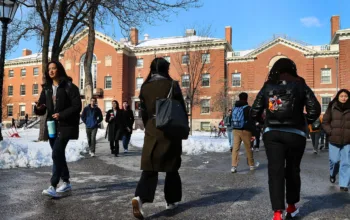The $550 billion legislation includes some massive investments, while failing to fully address the country’s needs.
President Joe Biden on Monday signed a historic $1.2 trillion infrastructure bill into law.
The law, the Infrastructure Investment and Jobs Act (also known as the bipartisan infrastructure framework, or BIF), is a massive investment in roads, bridges, and water pipes. But it still falls short of the funding that the country needs.
About $550 billion of the $1.2 trillion law is new spending, which will be spread out over five years. The remaining $650 billion in the bill would have been allocated for existing transportation and highway programs under previously planned funding.
The new money in the bill will go toward a wide range of projects, including road repairs, high-speed internet services, and investments in electric buses. Notably, the infrastructure bill was backed by both Democratic lawmakers and some Republicans, and was the culmination of years long attempts to advance infrastructure legislation that’s spanned presidential administrations.
While it’s a landmark investment, the legislation only authorizes a fraction of the funding required to tackle the entirety of the US’s infrastructural challenges. Across specific categories of the bill, including lead water pipe replacement and broadband, it’s likely to take much more than what’s already been allocated to fully solve issues of access, safety, and equity. The bill includes $15 billion specifically for addressing lead pipes, for instance, while experts believe it will take $60 billion to actually replace every lead pipe in America.
Still, the passage of this bill — which contains critical funding that the country has needed for decades — is significant, and an important down payment for future investments.
“Finally, infrastructure week,” President Joe Biden quipped earlier this month, referencing the fact that President Donald Trump often declared it “infrastructure week,” only for no progress to be made on related legislation. “We did something that’s long overdue, that long has been talked about in Washington, but never actually been done.”
What’s in the bill
The $550 billion in new spending includes big boosts in funding for transportation, internet access, and clean drinking water, much of which will be distributed to states that will then allocate the funds to regional projects. The bulk of the money focuses on transportation-related needs including roads, bridges, rail, public transit, airports and waterways.
Broadly, the funding for various provisions is less than what Biden had originally requested in his American Jobs Plan, underscoring the compromises made between Democrats and Republicans to reach the final version of the bill. This past March, Biden had called for $100 billion for broadband, while the bill includes $65 billion; he’d also requested $159 billion for roads and bridges and ended up with $110 billion.
Below is a rundown of the legislation:
- $110 billion for roads and bridges: An estimated 173,000 miles of roads and 45,000 bridges are in major need of maintenance, and the bill’s largest appropriations would go toward making them more structurally sound and repairing damage like potholes.
- $66 billion for passenger and freight rail: The bill strives to modernize existing rail services and expand lines to new geographic areas. Amtrak CEO Bill Flynn has said that this money, which represents the largest federal investment the rail service has received since it was established in 1971, will go to improving its offerings in the Northeast corridor and growing its presence in as many as 160 communities.
- $65 billion for expanding broadband access: The bill intends to provide high-speed internet access to millions of Americans who don’t currently have it, and includes funds for broadband deployment in rural areas and on tribal lands. Additionally, it contains funding for vouchers to help low-income families afford internet access.
- $65 billion to update the electric grid: A key piece of the legislation focuses on bolstering the resiliency of the electric grid in the face of a growing number of natural disasters including wildfires and hurricanes. It’s also dedicated to building new power lines and enhancing the infrastructure for delivering renewable energy.
- $55 billion for water and wastewater: The measure tries to tackle water quality in a few different ways: It includes $15 billion for replacing lead pipes, $10 billion to remove contaminants in drinking water, and more than $20 billion for projects that address broader drinking water and wastewater needs.
- $39 billion for public transit: These funds would repair existing public transit lines, modernize them, and make them easier to access. A key goal is to make existing bus and rail fleets greener, including bringing in more buses that are zero-emissions and retiring those that aren’t.
- $25 billion for airports: The bill strives to make upgrades to air traffic control equipment, and to tackle longstanding repairs and maintenance that airports across the country need, like runways and terminals.
- $17 billion for ports and waterways: The bill attempts to curb pollution near ports, and address congestion in order to streamline access and traffic at many locations.
- $7.5 billion for electric vehicle chargers: This funding includes $7.5 billion to establish a robust nationwide network of electric vehicle chargers, the first system of this scale, and an investment seen as critical for electric vehicle adoption.
- $1 billion for reconnecting communities: In the past, roads, highways, and bridges have been built that divide communities of color from white communities, an issue this bill aims to address by removing existing barriers and building new infrastructure.
The US needs a lot more infrastructure weeks
These investments make significant inroads in confronting the country’s infrastructure issues, though they aren’t sufficient to address them completely.
Across an array of provisions including drinking water, public transit, and broadband, experts believe much more funding is needed to fully tackle the problems cities and states are facing. The bill contains $39 billion for public transit, for example, but the American Society of Civil Engineers estimates that US public transit systems need about $176 billion in work right now, and will need almost $100 billion more in funding by the end of the decade.
The success of the bill will also depend heavily on implementation, which will vary across states. For many programs, the federal government is expected to allocate a specific amount of funding to states, which will then dole out money to different localities. During this process, many cities and towns will be competing for a limited pool of funding, leaving prioritization of projects up to the state’s discretion.
With drinking water funding, for example, each state will get a lump sum that it can then allocate to the places it determines are most in need, an approach that doesn’t necessarily guarantee an equitable distribution of money. As E&E News reported, an August review from the Environmental Policy Innovation Center found that states have historically been less likely to distribute funding from drinking water resources to smaller and more diverse communities.
Overall, the bill is unlikely to revolutionize American infrastructure, or even bring its transportation systems on par with countries like Singapore and the Netherlands. But the legislation marks key progress on a relatively popular issue that has previously stymied Congress, and contains big investments that the country has needed for a long time.
Although more action is required to fully confront the infrastructure problems the US faces, this bill is, importantly, a start.
Update, November 15: This story has been updated to reflect news of President Joe Biden signing the infrastructure bill into law.
Author: Li Zhou
Read More



